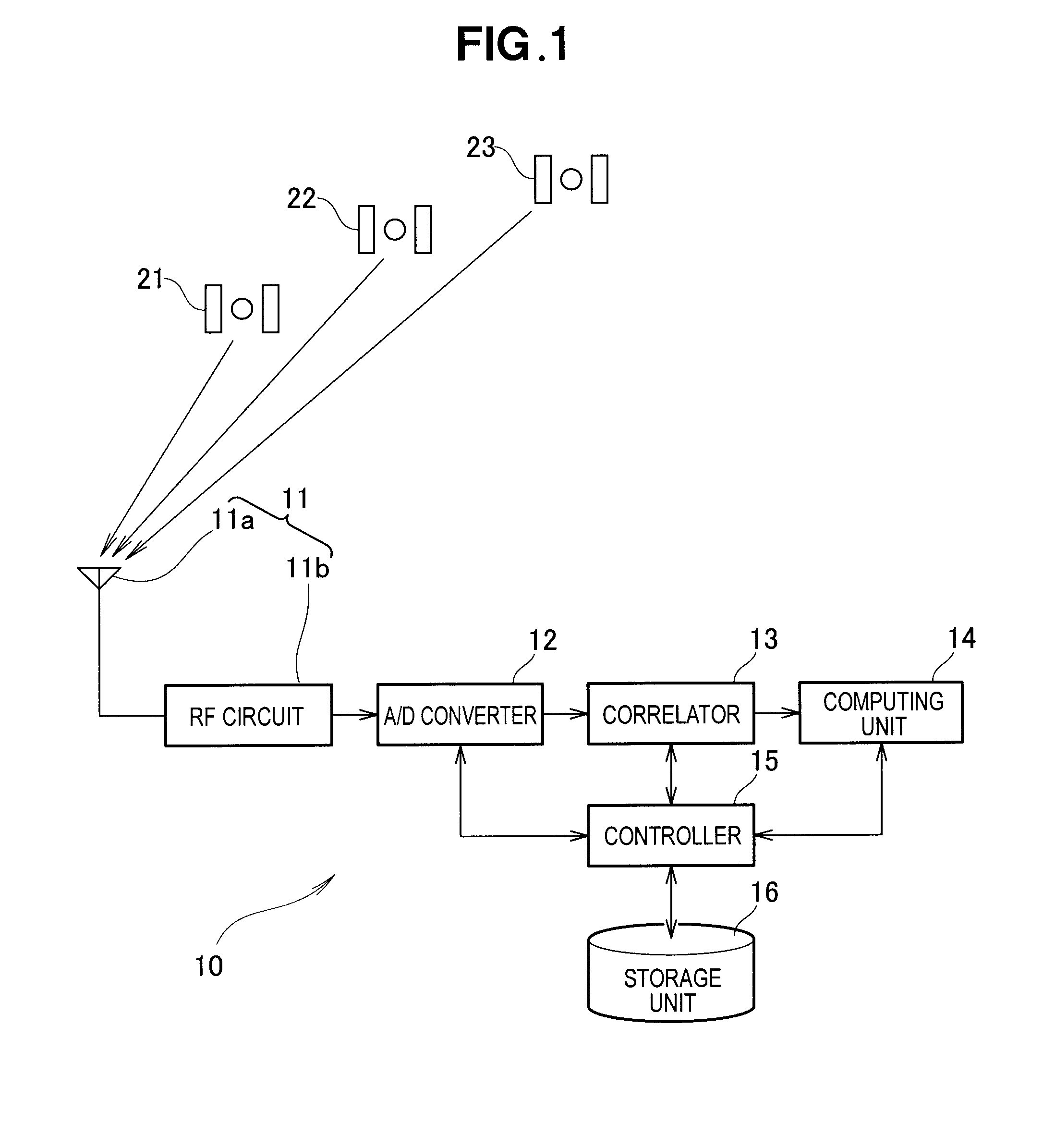Position calculation method and apparatus with GPS
a technology of position calculation and gps, applied in satellite radio beaconing, measurement devices, instruments, etc., can solve the problems of large error t, large error t, and gps receiver clock often out of synchronization with gps satellite clocks, so as to improve the detection accuracy of position and simple and accurate manner
- Summary
- Abstract
- Description
- Claims
- Application Information
AI Technical Summary
Benefits of technology
Problems solved by technology
Method used
Image
Examples
first embodiment
[0060]Operation of the GPS position calculating apparatus 10 according to the present invention shown in FIG. 1 will be described in detail with reference to a flowchart shown in FIG. 4. The flowchart shows a sequence of operations to be executed by the controller 15.
[0061]At step S101, the controller 15 sets a count value i of a counter assigned to the program to “0”. The counter counts the number of target GPS satellites from which signals are to be received. In the illustrated embodiment, the number “n” of target GPS satellites is three, and these three target Satellites 21, 22 and 23 are used for determining the position of a measurement point.
[0062]At step S102, the controller 15 determines as to whether a high-frequency analog signal transmitted from the first GPS satellite 21 has been received by the RF circuit 11b. If an affirmative determination is made (YES) at step S102, the control process goes on to step S103, where the RF circuits 11b down-converts the high-frequency a...
second embodiment
[0099]Operation of the GPS position calculating apparatus 10 used as GPS satellite position calculating apparatus according to the present invention will be described in detail with reference to a flowchart shown in FIG. 6. The flowchart shows a sequence of operations to be executed by the controller 15.
[0100]At step S201, the controller 15 sets a count value i of a counter assigned to the program to “0”. The counter counts the number of target GPS satellites from which signals are to be received. In the illustrated embodiment, the number “n” of target GPS satellites is three, and these three target Satellites 21, 22 and 23 are used for detecting a position of the reference point.
[0101]At step S202, the controller 15 determines as to whether a high-frequency analog signal transmitted from the first GPS satellite 21 has been received by the RF circuit 11b. If an affirmative determination is made (YES) at step S202, the control process goes on to step S203, where the RF circuits 11b d...
third embodiment
[0129]According to the GPS position calculating apparatus as used in a GPS satellite position calculating apparatus, the distance between the position B of each GPS satellite at the signal transmission time and the known position O of the reference point is used as a pseudorange in the process of calculating the position B of the GPS satellite. Unlike the conventional arrangement in which the distance between the position A of each GPS satellite at the signal transmission time and the known position O of the reference point is used as a pseudorange in the process of calculating the position of the GPS satellite, the aforesaid arrangement of the present invention is able to simplify the calculation method or procedure, increase the calculation accuracy, and eventually improve the accuracy in detecting the position of GPS satellite. Furthermore, calculation of the GPS satellite position at the signal reception time does not require observation data to be supplied from a known receiver...
PUM
 Login to View More
Login to View More Abstract
Description
Claims
Application Information
 Login to View More
Login to View More - R&D
- Intellectual Property
- Life Sciences
- Materials
- Tech Scout
- Unparalleled Data Quality
- Higher Quality Content
- 60% Fewer Hallucinations
Browse by: Latest US Patents, China's latest patents, Technical Efficacy Thesaurus, Application Domain, Technology Topic, Popular Technical Reports.
© 2025 PatSnap. All rights reserved.Legal|Privacy policy|Modern Slavery Act Transparency Statement|Sitemap|About US| Contact US: help@patsnap.com



